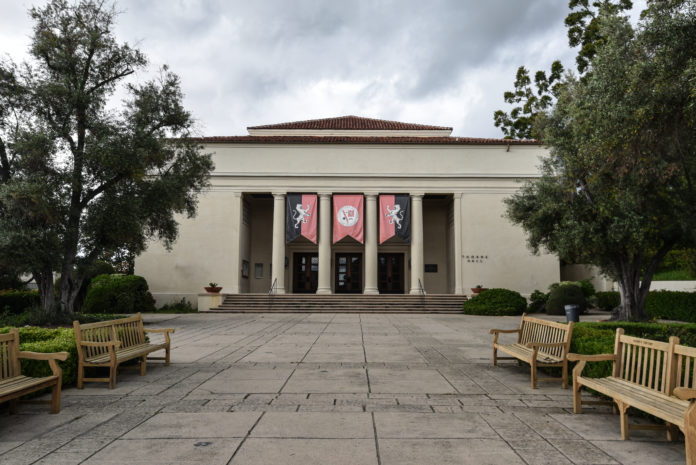Occidental College implemented new sexual assault prevention and awareness training for students this year, including a revised online component and a new in-person training that took place Aug. 28. According to Occidental Sexual Assault Coalition (OSAC) members Charlotte Harrington (senior) and Berret Yuffee (junior), the content of the new training is inspired by the community meetings hosted by OSAC last year in the wake of a massive spike in reports of sexual assault.
“Those were very powerful in gauging what the community needed,” Harrington said. “We had community members and survivors of assault come to these open sessions, and from that, we took copious amounts of notes and organized it into these formal demands.”
Among the demands were calls for increased education around boundaries, consent, rejection resilience and accountability. The design and implementation of the new training largely fell on the Project for a Sexual Assault Free Environment (Project SAFE). According to Project SAFE coordinators Joaquin Caro (they/them) and Stephani Candelaria (she/her), staff were deeply moved by OSAC’s efforts.
“People have been saying it feels like we are doing all this work just to fix trauma after it has happened,” Caro said. “Where is the education for potential abusers? Where is the education to prevent harm? The new training inspired an entire half of our office.”
According to Candelaria, the new prevention education aspect of Project SAFE is especially necessary in the wake of the pandemic isolation and lockdowns.
“These are young people who lost two crucial years of cognitive and social development and now coming back to campuses,” Candelaria said. “They may not intend to cause harm, but they lack the skills to read other people’s boundaries and talk about consent. That is why a key piece of our education is about how to check ourselves.”
Harrington goes even further, saying that the old training was not meeting expectations within the realm of survivor advocacy and that students were not being made aware of Project SAFE resources.
“We felt fixing this to just get the word out about what resources are available on campus beyond just your first orientation week at Oxy was an important prevention and advocacy method,” Harrington said.
Harrington and Yuffee also said that having only digital prevention and awareness was not sufficient, as it was too easy for students to lose focus. Carro and Candelaria said that while the new prevention and awareness training has received positive feedback, it is not free of critique either.
“There were comments saying, ‘Don’t you feel like this is just putting white, cis, het men in a vulnerable place to not be trusted?'” Candelaria said. “That’s tough and I think that male-identifying, heterosexual, cis-gendered folks might sit uncomfortably with this content. Our invitation to everyone is to sit with that discomfort. It’s okay to be uncomfortable. That’s a natural part of the process of changing. Sometimes you need to sit and be uncomfortable and ask yourself why.”
Carro said they are attempting to make the new training as free of bias as possible.
“As we receive feedback, I try to adjust my language and say that even though this particularly affects oppressed groups and marginalized peoples, anyone can be a perpetrator, and anyone can be a victim,” Caro said.
Yuffee said OSAC is also committed to getting more men actively involved in prevention education and activism.
“I know that a lot of men feel uncomfortable in the discussion because they think they shouldn’t be the ones to say anything or that they think they aren’t part of the problem,” Yuffee said. “I think that is what we want to change. Something that does feel frustrating as a member of OSAC is to feel and know that we can do all that we do, and nothing will change socially unless there’s male involvement on campus.”
Caro and Candelaria said the mandatory training will by no means be the end of Project SAFE’s expanded capacity. They said their event plans for the school year include a multitude of workshops and monthly interviews with relevant organizations in the LA area. Candelaria said Project SAFE is expanding their programming into digital spaces as well, utilizing Instagram and Tiktok to engage students online.
“We don’t want to give too much away, but we’ve got things like trauma-informed yoga, a self-defense workshop, and we’re bringing in a leader in the digital field to explain how to engage in safer practices online,” Candelaria said. “We’ll be offering monthly interviews with outside organizations such as the Center for Pacific Asian Families, the East LA Women’s Center, and just trying to offer as many resources to our students in a variety of ways.”
OSAC, in light of the spike in reported cases last year, also aims to expand its presence on campus.
“We want to work with people,” Harrington said. “We want to work with the fraternities, we want to work with sports houses, we want to work with campus orgs, and in no way do we want to burn any bridges. If people are interested in how to make a change, specifically in male-dominated spaces, please reach out to us. We would love to work with you.”
Harrington and Yuffee said they look forward to the future, expecting the new training and increased visibility of their groups to effect significant change on campus in the years to come.
“I hope that from the training, a lot of students use Project SAFE for the incredible resources they provide, and I hope that they feel like it’s a safe place to go if they otherwise don’t feel safe on campus,” Harrington said. “That also means when OSAC holds events this year, they will attend because they want to learn more, further their education, and stay engaged in the fight against sexual violence.”
![]()



































